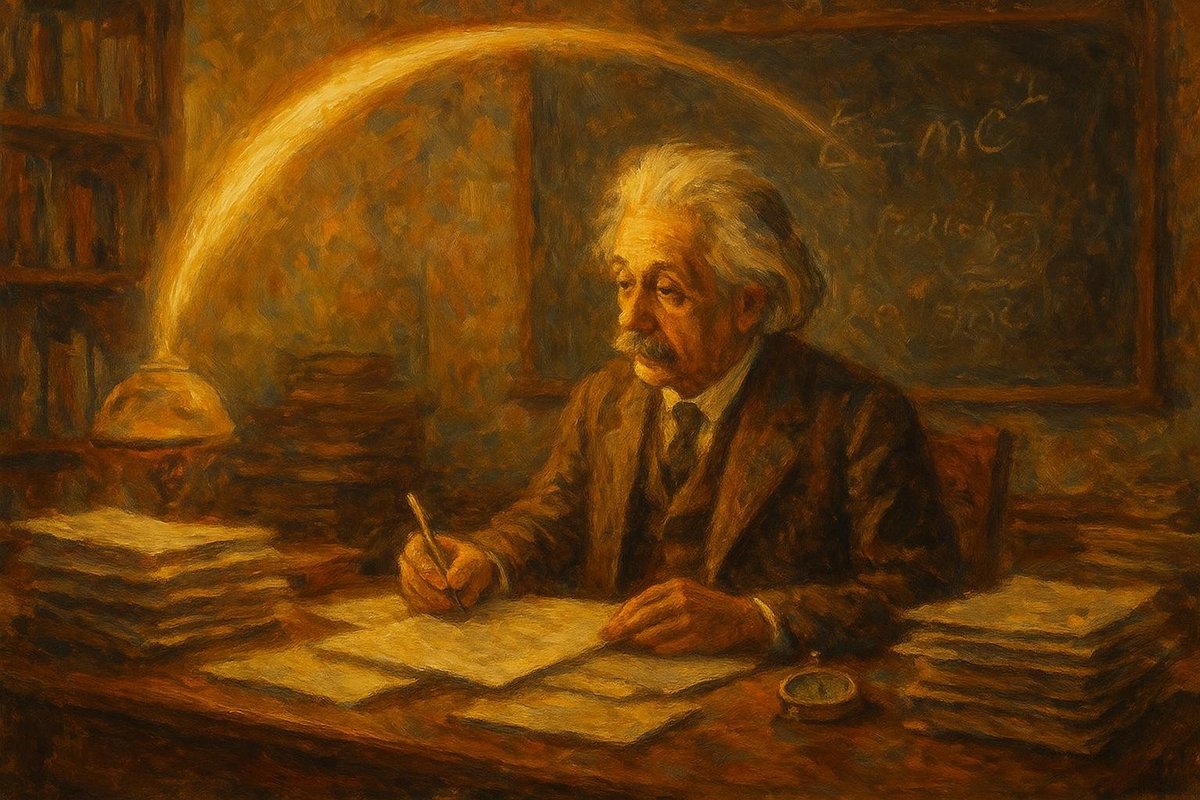
The Early Influences: Seeds of Curiosity
Picture a young Albert Einstein, not the icon with unruly hair but a curious child in late 19th-century Germany, endlessly fascinated by the world around him. In a family that valued intellectual exploration, Einstein was exposed to complex ideas from an early age. His father, a salesman and engineer, introduced him to the marvels of electricity, sparking Einstein’s lifelong curiosity.
Interestingly, it was a simple compass that truly captured his imagination. Young Albert marveled at how its needle would mysteriously point north, stirring questions that would linger with him for years. It was as if the universe whispered secrets, waiting for him to uncover them.
- Born in Ulm, Germany, in 1879.
- Gifted a compass by his father, igniting his curiosity.
- Influenced by family discussions on science and technology.
No wonder Einstein’s early experiences were critical in shaping his approach to science. The seeds of curiosity planted in his mind would bloom into revolutionary ideas.
Mental Models: The Power of Thought Experiments
Einstein’s intellectual style was unique, a dance between imagination and logic. He famously said, “Imagination is more important than knowledge.” This belief was not mere rhetoric; it underpinned his methodological approach to unraveling the universe’s mysteries.
His thought experiments were his laboratory, where he bent the rules of physics to test his theories. Imagine him riding a beam of light, a mental model that eventually led to his groundbreaking work on the theory of relativity. Could light behave differently at high speeds? Einstein dared to explore this question with nothing but his mind as his guide.
- Developed theory of relativity using thought experiments.
- Visualized riding a beam of light, challenging conventional views.
- Published the special theory of relativity in 1905.
Of course, these mental exercises were more than daydreams; they were profound explorations that reshaped scientific paradigms.
Challenges & Resilience: Overcoming the Impossible
Einstein’s journey was not without adversity. The year 1905, known as his annus mirabilis, saw him publish four groundbreaking papers, yet he was still an outsider in the academic world, working as a patent clerk in Bern, Switzerland.
Rejection and skepticism greeted his ideas. After all, who was this young man challenging Newtonian physics? Yet, Einstein persisted, driven not by a desire for fame but by an insatiable curiosity and a relentless pursuit of truth.
- Published four major papers in 1905 while working at a patent office.
- Faced skepticism from the scientific community.
- Persevered through intellectual isolation and rejection.
As time goes on, we see that it was his resilience that allowed his theories to finally gain acceptance and revolutionize our understanding of time and space.
Legacy: A Mindset That Transcends Time
Einstein’s legacy extends far beyond his scientific contributions. He embodied a mindset that combined imaginative speculation with rigorous inquiry, encouraging future generations to question and explore. His theories have become the foundation of modern physics, influencing everything from GPS technology to our understanding of black holes.
Many people believe that Einstein’s approach to science holds lessons for us all, regardless of discipline. His work exemplifies how creative thinking can lead to profound truths about our world.
- Foundation for modern physics and cosmology.
- Influenced technology and scientific thought worldwide.
- Inspired future generations to value curiosity and creativity.
What’s the takeaway? Einstein’s imaginative approach to problem-solving remains a beacon for those seeking to unlock the secrets of the universe.
Fuel Someone Else’s Curiosity
As you reflect on Einstein’s journey, let the spark of curiosity fuel your own explorations. Share this story, discuss it with friends, and let your imagination roam. Who knows what mysteries you might uncover? In the words of Einstein himself, “The important thing is not to stop questioning.” Let’s keep the flame of curiosity burning bright, igniting new discoveries for generations to come.

Leave a Reply